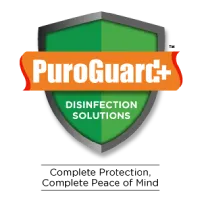Hospital Hygiene: The Key to Safe and Effective Patient Care

Hospital hygiene is more than a routine—it’s a foundational element of patient safety and quality care. From rigorous cleaning and disinfection protocols to advanced sterilization techniques, maintaining high standards of hygiene is essential for preventing infections and ensuring a safe environment for patients, relatives, and healthcare staff at hospitals. This blog explores the significance of hospital hygiene and the comprehensive approaches that contribute to a clean and safe healthcare setting.
The Imperative of Hospital Hygiene
Hospital hygiene encompasses a range of practices designed for infection prevention and control to maintain a safe environment. It’s a multifaceted approach that includes hand hygiene; skin antisepsis; instrument cleaning, disinfection and sterilization; surface and environment cleaning, disinfection and sterilization, and biomedical waste management. Each component plays a critical role in safeguarding patients, healthcare professionals, and visitors from the risks associated with healthcare-acquired infections (HAIs).
Hospitals are unique environments where the stakes are high. Patients often have compromised immune systems, and the presence of opportunistic pathogens in the hospital environment can lead to severe infections and associated complications. Effective hospital hygiene practices are essential to mitigate these risks and provide a safe space for healing and recovery to the patient and safe working environment to healthcare staff.
Core Components of Hospital Hygiene
- Hand Hygiene: Proper hand hygiene is one of the simplest yet most effective methods for preventing the spread of infections. Hospitals must ensure that hand washing facilities and hand sanitizers are accessible and that staff, patients, and visitors adhere to hygiene protocols.
- Surface and Environment Cleaning and Disinfection: Regular cleaning and disinfection of surfaces are fundamental. This includes hard surfaces like floors, walls, OT tables, trolleys, OT lamps, etc. ; Soft surfaces (Linen: Bed sheets, pillow covers, curtains, patient uniform, reusable PPEs) and high-touch areas like door handles, bed rails, and medical equipment. Effective surface and environment disinfection reduces the risk of cross-contamination and helps maintain a safe environment.
- Cleaning, Disinfection & Sterilization of Medical Instruments & Equipment: Sterilization is critical for preventing infections transmitted through medical instruments. Hospitals use various methods, including autoclaving, chemical disinfectants and sterilant to ensure that all equipment is free from microorganisms.
- Biomedical Waste Management: Proper waste management is crucial in preventing the spread of infections. Hospitals must follow strict protocols for the segregation, handling, and disposal of medical waste to minimize contamination risks.
Training and Education
For hospital hygiene practices to be effective, staff training and education are paramount. All personnel, from healthcare providers to cleaning and housekeeping staff, must be well-versed in hygiene protocols and practices. Regular training sessions and updates on best practices ensure that everyone is equipped to maintain high standards of cleanliness and 100% compliance on infection control practices at the hospital
Innovations in Hospital Hygiene
Advancements in technology continue to shape the field of hospital hygiene:
- Antimicrobial Coatings: Some hospitals are adopting surfaces treated with antimicrobial agents to provide continuous protection against pathogens. These coatings complement traditional cleaning methods and help reduce microbial load.
- Automated Cleaning Systems: Automated systems, such as robotic cleaners and UV-C disinfection devices, Automatic washer disinfector are increasingly used to enhance cleaning efficiency and coverage. These technologies can reach areas that are difficult to clean manually and provide an extra layer of disinfection.
Challenges in Hospital Hygiene and Infection Control
Despite advancements, challenges remain in maintaining optimal hygiene and infection control standards:
- Compliance: Ensuring consistent adherence to hygiene and infection prevention protocols can be challenging, especially in large and busy hospitals. Regular audits and monitoring are necessary to address compliance issues and improve practices
- Resource Allocation: Adequate resources, including time, personnel, and funding, are essential for maintaining high hygiene standards. Hospitals must balance these resources with other operational needs.
The Future of Hospital Hygiene
As the healthcare landscape evolves, so will the approaches to hospital hygiene and infection prevention. Continued research and innovation will drive the development of more effective cleaning, disinfection and sterilization methods. Hospitals will increasingly focus on integrating new technologies with traditional practices to enhance overall hygiene and patient safety.
Hospital hygiene is a critical component of healthcare that directly impacts patient safety and quality of care. By implementing comprehensive infection prevention and control practices, investing in staff training, and embracing technological advancements, hospitals can maintain high standards of cleanliness and infection control.


